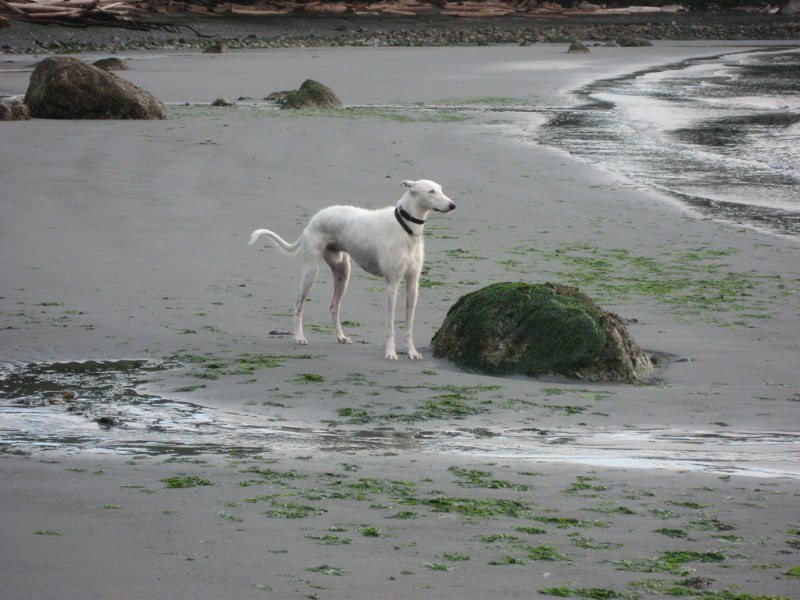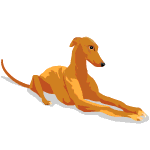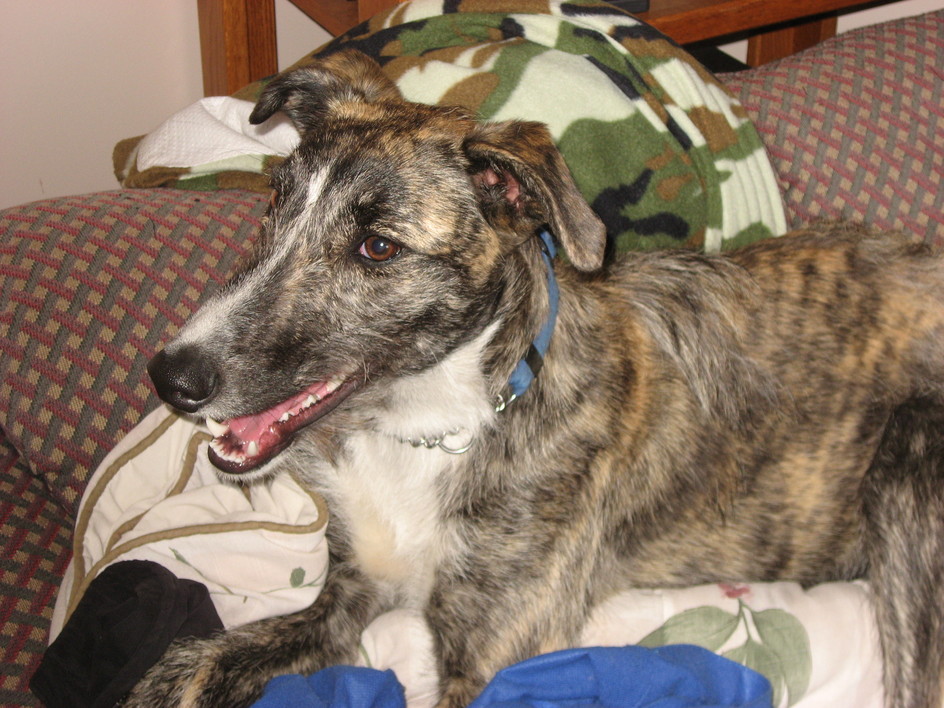What is a Lurcher?
Is it a "breed"?
Trafalgar dogs are specifically Lurcher Longdogs, meaning they are derived from Greyhound/Deerhound and other sighthound lines.
There are also types of Lurchers derived from crossing
sighthounds with terriers, collies or other working breeds but these are not true Longdogs or Staghounds. Therefore, these dogs are not a registered "breed" by North American standards, but do have registries and standards going back generations overseas.
So, as hybrids or designer dogs go, Lurcher Longdogs are actually not a fad, but a tried and true Celtic tradition going back many centuries. Our dogs are linebred, meaning old bloodline Longdog to Longdog.**
Is it a "breed"?
Trafalgar dogs are specifically Lurcher Longdogs, meaning they are derived from Greyhound/Deerhound and other sighthound lines.
There are also types of Lurchers derived from crossing
sighthounds with terriers, collies or other working breeds but these are not true Longdogs or Staghounds. Therefore, these dogs are not a registered "breed" by North American standards, but do have registries and standards going back generations overseas.
So, as hybrids or designer dogs go, Lurcher Longdogs are actually not a fad, but a tried and true Celtic tradition going back many centuries. Our dogs are linebred, meaning old bloodline Longdog to Longdog.**


 The Oldest "Designer Dogs"?
The Oldest "Designer Dogs"?The Lurcher was bred in Ireland and Great Britain by the Irish Gypsies and travelers in the 17th century. They were used for poaching rabbits, hares and other small creatures. The name Lurcher is a derived name from the Romani language word lur, which means thief. The travellers considered the short-haired Lurcher the most prized. The Lurcher is rarely seen outside of Ireland or Great Britain, and is still common in its native land. The Collie crosses were often not large enough to do the work the Lurcher was intended for.
Irish Romany or Roma people were instrumental in developing the breed, and traditionally sneered at any Lurcher that was not predominantly genetically Greyhound, since these "lesser" Lurchers were not as good at hunting and could not stand a full day's work of the hunt. The stringent training methods of the Gypsies are looked down upon in some Lurcher circles, since the pups began working at six months old. Only the top-producing pups were kept; the rest were sold at traditional bargain rates. Today some breeding is carried out in a more systematic manner, with Lurchers bred to Lurchers to perpetuate the "breed's" prowess at rabbit and hare coursing.
Generally, the aim of the cross is to "produce a sighthound with more intelligence, a canny animal" suitable for the original purpose of the Lurcher... poaching.
When you see greyhound and Lurchers muzzled in public parks, it is not because of any aggression to people or a risk of biting ... it is to protect small animals (squirrels, rabbits, even cats or small dogs) if their urge to hunt is triggered in an exuberant run.

TRAFALGAR
Celtic Lurchers
&
Staghounds
Celtic Lurchers
&
Staghounds
Companions, Hunters &
Coursers.
Developed in the Middle Ages in Great Britain and Ireland, the lurcher was created because only nobility were allowed to have purebred sighthounds likeIrishWolfhounds,ScottishDeerhounds,
Greyhounds, Borzoi and Whippets, whereas crosses, or curs, had no such perceived value. Similarly, nobility owned most land and commoners were not allowed to hunt game on crown land or other noble estates.
It was important that the lurcher did not resemble too closely a sighthound, as the penalties for owning a sighthound were high, particularly given that if you owned one then by default you were considered a poacher. The original lurchers therefore were generally heavier-coated dogs who could herd sheep as well as bring home a rabbit or hare for the pot.


If you like Greyhounds and sighthounds, Lurcher Longdogs are similarly loving, comical, and devoted. One minute lazy and next full of beans. They have a high prey drive, meaning they need a securely fenced yard and all walks on leash. Gentle and patient with family when mature, they can be overzealous and curious until they learn to listen. They are sensitive and require a gentle, consistent hand,
They will chase and hunt small fast moving animals by instinct. If raised with cats and pets they are great, but never underestimate their drive to do what they were bred for.
They will chase and hunt small fast moving animals by instinct. If raised with cats and pets they are great, but never underestimate their drive to do what they were bred for.

**Info thanks to Lurcher Lovers http://www.squidoo.com/lurchers#module104259651
and Doxhope Hounds http://doxhopedeerhounds.co.uk/lurchers.htm
and Doxhope Hounds http://doxhopedeerhounds.co.uk/lurchers.htm